Brijan, Johann Diederich Frans, born 20-07-1918, in Bargercompascuum/Drenthe, 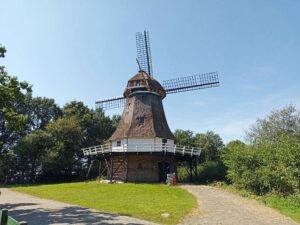 Netherlands and lived at Verlengde Oosterdiep 102.
Netherlands and lived at Verlengde Oosterdiep 102.  Johann was the son (sixth of eleven children) of peat worker Willem August Albert Brijan (29-03-1888, Bargercompascuum – 22-06-1965, Bargercompascuum) and Trientje, born Smit (15-01-1890, Nieuw Buinen, municipality of Borger – 16-03-1962, Groningen). Johann married Harmina Karst (02-07-1919 – 30-03-1998) on 26-03-1940. The couple had three children.
Johann was the son (sixth of eleven children) of peat worker Willem August Albert Brijan (29-03-1888, Bargercompascuum – 22-06-1965, Bargercompascuum) and Trientje, born Smit (15-01-1890, Nieuw Buinen, municipality of Borger – 16-03-1962, Groningen). Johann married Harmina Karst (02-07-1919 – 30-03-1998) on 26-03-1940. The couple had three children.
Johann worked as a peat worker/inspector of the PTT Listening Permit Control Service. 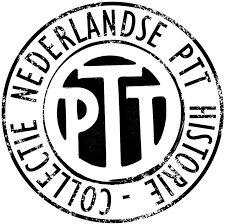 On 05-04-1938, Johann Brijan was conscripted into the Dutch 5th Infantry Regiment.
On 05-04-1938, Johann Brijan was conscripted into the Dutch 5th Infantry Regiment. 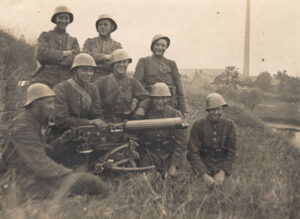 More than a year later, on 17-09-1938, he was promoted to corporal. That day he was also sent on extended leave. In connection with the mobilization, he was called up again on 25-08-1939 and joined the 19th Artillery Regiment as a motorcycle messenger.
More than a year later, on 17-09-1938, he was promoted to corporal. That day he was also sent on extended leave. In connection with the mobilization, he was called up again on 25-08-1939 and joined the 19th Artillery Regiment as a motorcycle messenger.  In mid-November 1939, he suffered serious head and hand injuries in an accident with his motorcycle. Not even fully recovered, he joined the 3rd Battalion of the 28th Infantry Regiment in early 1940. At his own request, he was transferred to the Grebbeberg,
In mid-November 1939, he suffered serious head and hand injuries in an accident with his motorcycle. Not even fully recovered, he joined the 3rd Battalion of the 28th Infantry Regiment in early 1940. At his own request, he was transferred to the Grebbeberg, 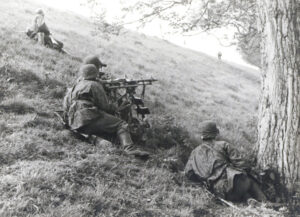 where he became involved in the fighting with the Germans in May 1940. During the battle for the Grebbeberg – including the fighting at Achterberg – 424 Dutch soldiers were killed. One man died on 18 May while clearing a minefield for the Germans. Those 425 men who died were one fifth of all Dutch soldiers who died during the May days (approx. 2,300 men). If one considers that this toll was exacted in a battlefield that measured no more than approximately two by three kilometers, then the magnitude of that loss is probably made clear enough. One victim was Ackermans, Florentius Johannes Maria “Jan”
where he became involved in the fighting with the Germans in May 1940. During the battle for the Grebbeberg – including the fighting at Achterberg – 424 Dutch soldiers were killed. One man died on 18 May while clearing a minefield for the Germans. Those 425 men who died were one fifth of all Dutch soldiers who died during the May days (approx. 2,300 men). If one considers that this toll was exacted in a battlefield that measured no more than approximately two by three kilometers, then the magnitude of that loss is probably made clear enough. One victim was Ackermans, Florentius Johannes Maria “Jan”

 soldier of the MC-II-11 Infantry Regiment. Nephew of my mother,
soldier of the MC-II-11 Infantry Regiment. Nephew of my mother, 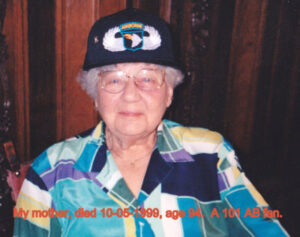 killed on the Grebbeline on 13-05-1940, age 32.
killed on the Grebbeline on 13-05-1940, age 32.
Brijan, by then a sergeant, remained unharmed. In mid-July 1940, he was sent home on extended leave. On 10–02-1942, he started working as an inspector at the PTT Listening Permit Control Service. In that position, he helped many radio owners hide their radios. He also regularly had visitors come to listen to the BBC 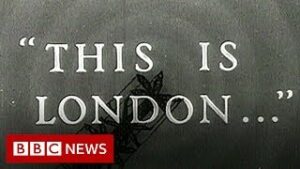 and Radio Oranje,
and Radio Oranje,  because he had of course not handed in his own radio either. He got the impression against him when he and a friend decided to register as members of the NSB.
because he had of course not handed in his own radio either. He got the impression against him when he and a friend decided to register as members of the NSB. 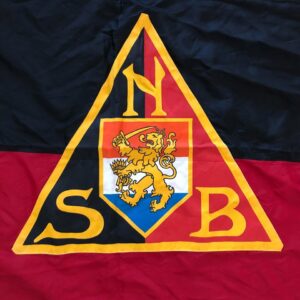 The National Socialist Movement in the Netherlands (NSB) led by Mussert, Anton Adrian “Ad”,
The National Socialist Movement in the Netherlands (NSB) led by Mussert, Anton Adrian “Ad”,


 was a Dutch political party that existed from 1931 to 1945. The NSB adhered to the ideology of National Socialism, presented itself as a movement rather than a party due to its anti-democratic attitude, and functioned as a collaboration party during the German occupation of the Netherlands in World War II.
was a Dutch political party that existed from 1931 to 1945. The NSB adhered to the ideology of National Socialism, presented itself as a movement rather than a party due to its anti-democratic attitude, and functioned as a collaboration party during the German occupation of the Netherlands in World War II.
In this way, they tried to collect data for the resistance. However, they never showed up at meetings and did not want to carry out orders from the NSB. This aroused distrust, especially among the Dutch traitors Landwacht. 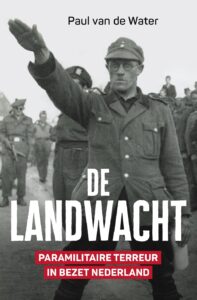 When they tried to enlist both of them in the Organisation Todt,
When they tried to enlist both of them in the Organisation Todt, 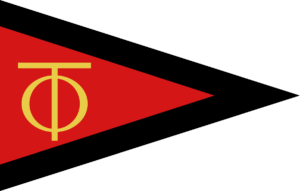 they went into hiding in a shelter in the forest. The Organisation Todt (O.T.) was a German construction company during the existence of Nazi Germany, named after its founder Fritz Todt.
they went into hiding in a shelter in the forest. The Organisation Todt (O.T.) was a German construction company during the existence of Nazi Germany, named after its founder Fritz Todt.  The organisation was founded in 1933. In 1945, when the Third Reich
The organisation was founded in 1933. In 1945, when the Third Reich  had fallen, the organisation was dissolved.
had fallen, the organisation was dissolved.
People in hiding regularly stayed there, and even a German deserter. Brijan borrowed the uniform of a friendly policeman and was therefore able to take people in hiding away or pick them up. On a November evening in 1944, Brijan and another resistance fighter, who were out to collect hand grenades, were arrested by the Landwachters Berend Oosting and Kobus van Ommen A short gunfight ensued, during which Bryan was wounded under his arm. Bryan immediately shot Van Ommen. The Landwachter collapsed, mortally wounded. Oosting disappeared into the darkness. Brijan was caught out by the deserter’s behaviour. Contrary to the agreement, the German showed up on the street. He was arrested by the Feldgendarmerie 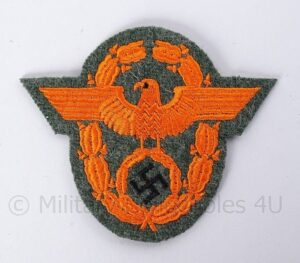 and taken to the detention center in Assen. During the interrogations, the man broke down. This immediately led to the arrest of Brijan. When he tried to escape, he broke his leg in two places. Nevertheless, he was severely beaten. The attending physician Van der Meulen
and taken to the detention center in Assen. During the interrogations, the man broke down. This immediately led to the arrest of Brijan. When he tried to escape, he broke his leg in two places. Nevertheless, he was severely beaten. The attending physician Van der Meulen 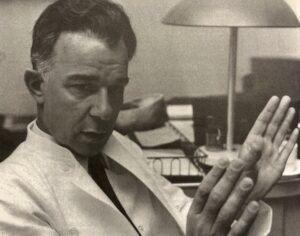 was also captured. Both men were taken to the detention center in Assen. Van der Meulen from Emmen was released after a few days. Doctor Nienhuis, who had taken over Bryan’s treatment, tried in vain to have him admitted to the Wilhelmina Hospital. The Germans rejected this request. They considered the risk of him fleeing to be too great. As a reprisal for the attack on Hanns Albin Rauter
was also captured. Both men were taken to the detention center in Assen. Van der Meulen from Emmen was released after a few days. Doctor Nienhuis, who had taken over Bryan’s treatment, tried in vain to have him admitted to the Wilhelmina Hospital. The Germans rejected this request. They considered the risk of him fleeing to be too great. As a reprisal for the attack on Hanns Albin Rauter
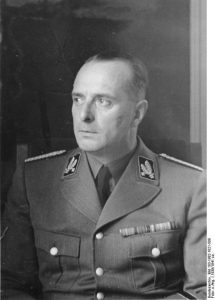
 in the night of 6 to 7 March 1945 at Woeste Hoeve,
in the night of 6 to 7 March 1945 at Woeste Hoeve, 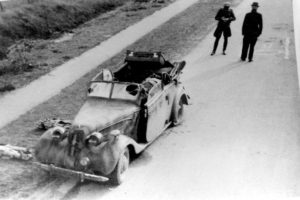
 he was shot along with 116 other Todeskandidaten. When his widow applied for a resistance pension, his NSB membership caused many problems. However, a series of positive witness statements showed that there could not have been any question of ‘political unreliability’. Jacobus Lubbertus van Ommen (02-01-1890 Emmen).
he was shot along with 116 other Todeskandidaten. When his widow applied for a resistance pension, his NSB membership caused many problems. However, a series of positive witness statements showed that there could not have been any question of ‘political unreliability’. Jacobus Lubbertus van Ommen (02-01-1890 Emmen).
Death and burial ground of Brijan, Johann Diederich Frans.
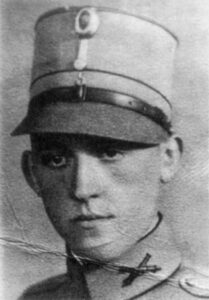
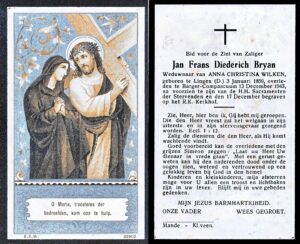
Rauter was found some time later and transferred to a hospital. Assuming an attempt on his life, he immediately ordered the worst conceivable retaliatory measure: the execution of 300 Todeskandidaten, prisoners sentenced to death for various reasons. In the end there were 263, which was all the directors of the various prisons could provide. And they were not all Todeskandidaten either not only resistance fighters were executed, but also a number of accidental prisoners. The executions were carried out in several places, 117 of them at Woeste Hoeve. The prisoners were put in twenties from Apeldoorn on a trailer and driven to the Woeste Hoeve, where the fifty-man firing squad was ready. After five minutes the next batch arrived.
His brother Willem Brijan identified him, age 25, on 10-05-1945 and together with an undertaker from Apeldoorn he collected his remains. The next day he was buried at the General Cemetery in Emmercompascuum. On 10 August 1993 he was reburied at the National Field of Honour of the War Graves Foundation in Loenen.
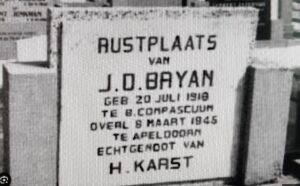
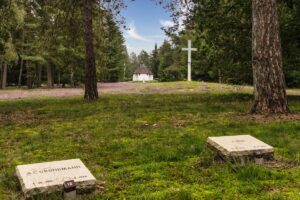
Message(s), tips or interesting graves for the webmaster: robhopmans@outlook.com
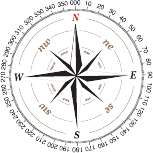















Leave a Reply